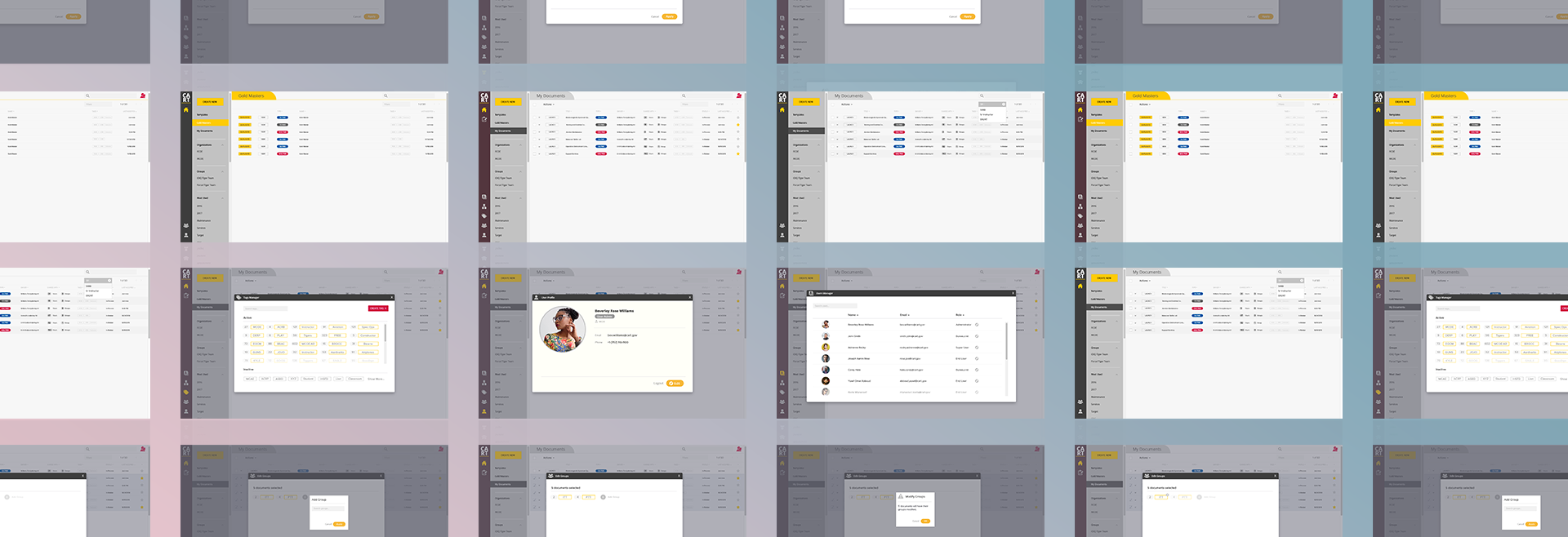BRAND

Project
Summary
Made With
IMPROVING THE CONTRACT WRITING PROCESS
Originally developed as the Contract Aqcuisition Requirement Tool, now titled the TRADOC Contracts Database (TCD), I led the IDSI development team to create the first collaborative contract creation tool for U.S. Army TRADOC.
Eric Monachello
Cassandra Trissler
Rachael Spayde
Henry Meredith
Benjamin Cole
Daniel Wilson
James McCollum
Nadia Aly
Zach Helm
Jeff Schultz
Stephanie Bramlett
Jennifer Heath
Erika Hoffman
Background
Project background
TCD is a collaborative contract creation product for the U.S. Army Training and Doctrine Command. Think Google Docs but for massive government contracts that need more control, data centricity, and security. As Head of Product for IDSI, I defined and translated the business requirements and led the discovery, design, and development to launch and enhance the product from 2017-2020.




UX Research
Get them to think big
Starting with user and stakeholder interviews, I mapped the current flow process and transformed needs into requirements (N+1). Given the size of the project, the research phase was quite extensive and consisted of several design thinking sessions. Throughout this process, I worked with our product, design, and engineering teams to brainstorm how we could quickly prototype the product for the customer.
No idea was thrown out - and they came up with some big ones. Users requested live collaboration, tracked changes, diff markup, staffing workflows and life cyles, in-app chat and commenting, intelligent search, and the list just kept growing. I worked with our product managers to refine scope for the POC and prioritize a backlog of features we could map into a release plan.



wireframing & Prototypes
Working with the design team, we analyzed their current contract processes and laid out a design centered around improving the process flow. It was clear much of the difficulty was collaborating and sharing information between editors. There also wasn't a consistent format they used for document creation or management workflow, so users were left to manage documents themselves. This led to documents being misplaced, or worse deleted.
We designed the MVP + V1 around document management and collaboration features. We made it easy to share content to authorized users and comment on documents.
SCOPING THE BIG IDEAS
After analyzing how long it took to create contracts using their current processes, I knew we had to focus on standardizing their information first. I worked with procurement SME's across multiple government teams to help map out best practices and standards.
Working closely with the design team, we began to evolve the initial wireframes and started making key functionality decisions with the development team. The product needed to be a single-page application, built so the user could access it from any browser. I knew we had to start simple but save time for spikes to dive into researching how to implement the technology to provide what the customer wanted.


Design
BUILT FOR SUCCESS
Once we knew what tech we could leverage, we focused on creating a prototype design that could scale. We worked with our government customer to design color palettes, iconography, buttons and controls, forms, pickers, and components.
The goal was to create a reusable design that could promote a theme throughout the application and give designers the opportunity to create a consistent user experience across the application.
As the design team worked through mockups and prototypes, I worked with engineering to create user stories and prioritize the backlog. I led weekly discussions throughout the project to outline how components functioned and design intentions.




Development
PUSHING THE LIMITS
As I pitched ideas to the customer it became apparent the project's success relied heavily on pushing the boundaries of what our small team could do. I began working with the team to lay out research tasks to dive into emerging technology. As the team began exploring asynchronous communication, html diffing and markup, threaded commenting, and more, the app started to recieve customer buy-in. We were soon able to demonstrate MVP functionality and plan for future releases.
Since most of this functionality was not designed, I had to communicate between both teams to make sure application design didn't get out of scope and new functionality stayed true to the design system.

EXCEEDING EXPECTATIONS
We presented the product to stakeholders and senior leaders at the 2019 U.S. Army Annual Contracting Conference, to huge acclaim. The community loved the product and was excited to begin user tests. One of the highest ranking officials at the organization left a product review stating, "This is the best tool to come out of TRADOC in 15 years."
The success of the product has provided continued development, bringing in a larger user base to replace the existing contracts database management tool.